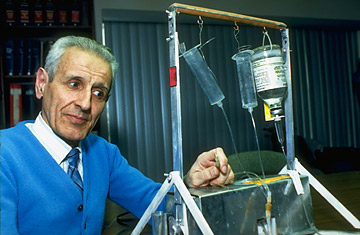The Slow Rise of Assisted Suicide

When I received my Massachusetts absentee ballot in mid-October, I was shocked to find an assisted suicide measure up for a vote. I knew similar statutes existed in other states, but I didn’t realize that Massachusetts was debating such an initiative. I grew curious: what are the mechanics of assisted suicide laws in the United States? The morality of such a law is a topic that elicits strong opinions from those on both sides of the argument—but I’ll leave that discussion aside for now.
Any discussion of assisted suicide in the US has to start with Dr. Jack Kevorkian. Dr. Kevorkian became both famous (and infamous) in the 1990s after he was found guilty of second-degree murder for aiding in the death of 130 terminally ill patients. He was sentenced to 25 years in prison, but was subsequently released after promising he would not continue his practices.
Assisted suicide made it onto the ballot in California in 1992, but could only muster 46% of the vote. However, in 1996, Oregon passed “Ballot Measure 16,” which led to enactment of the Oregon Death With Dignity Act. Passage of this act meant Oregon was the first state to allow assisted suicide, subject to very strict limitations. The Act gives those with a terminal illness and less than 6 months to live the opportunity to request that their doctor (if she is willing) administer a lethal dose of medication. Before the prescription can be given, the request must be confirmed by two non-interested witnesses, the patient must be of sound mind, and the request must be made orally a second time fifteen days later. In 2011, 114 lethal prescriptions were written in Oregon and 71 of those receiving the prescriptions ended their lives.
In 2008, Washington followed Oregon as the second state with an assisted suicide statute: the Washington Death With Dignity Act. The Act was passed with 58% of the vote and works much the same way as the Oregon Death With Dignity Act. Montana was the third state to allow assisted suicide, although they made the decision as part of a case: Baxter v. Montana. The case essentially ruled that assisted suicide was not banned by Montana’s Constitution.
The latest assisted suicide ballot measure came a few months ago in Massachusetts. This Act was modeled after Oregon and Washington’s Acts, but only received 49% of the vote.
The US Supreme Court has addressed the issue of assisted suicide on a couple of occasions. First, in Washington v. Glucksburg, decided in 1997, the Court found that there was no constitutional right to assisted suicide. Later, in Gonzales v. Oregon, the Court ruled that the US Attorney General could not bring Controlled Substances Act claims against doctors who prescribed lethal doses of medication in compliance with the Oregon law.
As it stands now, assisted suicide is legal in just three states: Oregon, Washington, and Montana. However, advocates of the practice are encouraged by the Supreme Court’s rulings in Glucksburg and Gonzales and will continue putting forth ballot measures. Nobody can look at the limited ballot measures and categorically say assisted suicide is accepted in the US, but it is certainly moving towards the mainstream.

